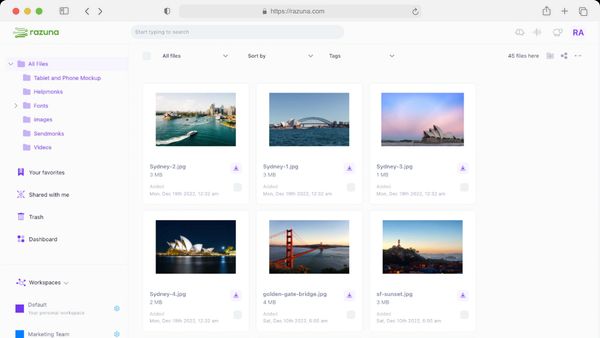
Announcing Collect+: Save and share everything
COLLECT+ is a productivity tool that helps you save and share everything you find on the web. It is built into the Razuna digital asset management platform.
Read nowYour brand matters. It helps your target audience, and the wider public, identify you in a sea of competitors. Your brand also helps consumers identify with you. When your brand identity aligns with their goals and values, they'll believe your products and services are what they need.
While branding is the process of creating this distinctive identity, brand asset management (BAM) is an integral part of the process.
Your brand identity may evolve to better represent your organization, or refresh its image. Even Harvard Business School understands the importance of a brand revamp. However, effective brand asset management will always be at the heart of it all.
Discover all you need to know in this ultimate guide to branding with brand asset management.
Your brand assets are all the recognizable elements that, together, make up your brand identity.
These are mostly visual elements, such as your logo, packaging, typography, font, and even the color scheme you use for them. However, brand assets are not limited to solely visual elements. A jingle could also be considered a brand asset because it represents your brand to the public.
Whatever makes you recognizable, and creates an emotional connection with consumers, is your brand, and the various aspects of it are your brand assets. Because they play an important role when used together to represent your brand, you must manage them effectively.
Brand asset management is the system you use to store, organize, and share the assets that constitute your brand.
Brand asset management allows you to control access to your digital brand assets. As team members come and go, you can adjust these control measures to include new teammates and exclude the ones who have left.
You don't have to worry about unauthorized changes to your brand. Brand asset management lets you set permissions for all activities related to your brand assets. You can even separate permissions for each asset, and change them when necessary, as branding projects evolve.
Branding with BAM allows you to collaborate, both in-house and with outside stakeholders, safely and securely. It allows teamwork on your rebranding efforts, when necessary while retaining original brand assets.
Brand asset management ensures that you stay true to your brand by retaining the integrity of all your brand assets. It preserves all the various visual elements that make up your brand identity so that your brand is always a faithful representation of your organization and products/services.
By centralizing all your brand assets, BAM gives you an overview of everything in your brand portfolio. This digital media library can be used as a gallery, with subfolders for different brand assets. This makes it easier to view the brand, both as a whole and broken down into its various constituent assets.
This is made easier with customizable folders, labels, descriptions, and tags. You can view all your brand assets at a glance, or individually. You can also search for and retrieve particular brand assets in seconds.
Are you not getting the interest in the brand you desire? Rebranding is sometimes the solution. This is the process of changing elements of the brand to better attract your target audience, improve awareness, and stand out among your competitors. It can also help your brand to remain fresh and relevant to the times.
Sometimes, all it takes are a few small tweaks to your brand. It takes time to get it right, and your team will likely have to reimagine, revise, and when not satisfied, restore brand assets several times. BAM's version control feature saves every change and every version while retaining a copy of the original.
Brand asset management provides easy access for stakeholders in your brand. Don't worry about any unauthorized changes, though. You can share access to your brand assets without fear, by setting unique individual permissions.
You can control who gets to see brand assets, and what they get to see. You can control who is allowed to edit and revise graphics, photos, and video or audio clips. It's easy to prohibit the unauthorized sharing of these brand assets, too.
Your branding team has undertaken a brand overhaul and it looks good, but it's time to find out if it meets with the leadership's approval. With BAM, your team can share the original and new versions of your logo, slogan, or jingle with management.
From here, you can attach comments, remarks, and notes to the files and share them with the entire team or individual members. Once reviewed and approved, the saved version is safely stored and ready for your marketing team to take over.
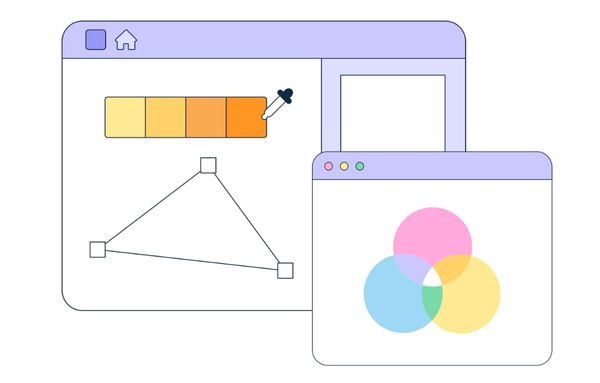
Ever wondered what the difference is between DAM and BAM? Yes, they sound very similar, and we realize it can be confusing.
DAM and BAM are the processes of managing your digital assets (DAM) and brand assets (BAM). And the processes of digital asset management and brand asset management are indeed very similar. But it's in their unique scope and purpose that they differ.
Brand asset management exists alongside your more general digital asset management. To illustrate this further, let's examine what digital assets and brand assets are and how they relate to each other.
Your digital assets include all items of your digital property. These are the digital versions of documents, PDF files, word documents, etc. They can also include photos, videos, audio files, and much more. As a basic rule of thumb, if it's digital and means something to your company, it's a digital asset.
Your digital assets will therefore be used across all departments of your organization. A digital asset library helps you keep an eye on all things digital in your company. Brand assets will feature in this digital library, too.
Digital asset management involves the stewardship of all these digital assets. It includes every step from grouping and categorizing these assets, to safely storing and sharing them, when necessary.
While your brand assets may be digital assets themselves, they're exclusively focused on your brand - your logo, your packaging, your slogan, etc. Your brand assets may include documents too, such as brand guidelines or copy for advertising.
It's not the type of digital asset that makes it a brand asset, but rather the intention behind it. So whereas certain digital assets are just digital assets, others are digital brand assets. They are associated with your branding, marketing, and promotional divisions.
Brand asset management entails the managing of these digital brand assets only, and not the other digital assets of your organization. Only those digital assets that pertain to your brand and its marketing, promotion, and advertising, are relevant here.
These are the top benefits you'll enjoy when using brand asset management software.
Brand consistency is crucial for building consumer loyalty and trust. In times of uncertainty, it will offer your regular customers a familiar ‘face' to believe in. The key to maintaining brand consistency is safeguarding your brand assets and preserving their integrity over time.
Brand asset management is the first line of defense in the battle for brand consistency and, as a result, brand integrity. Without proper management of your brand assets, errors can creep in that impact your brand's recognizability to your target audience.
Brand consistency is always important, but sometimes changes are needed for maintaining a vibrant brand, relevant to the changing times. To stay in step with your audience's changing attitudes and expectations, your brand may undergo several changes over time. Possibly even a complete revamp.
This requires hard work and collaboration to get it right. But with collaboration, comes uncertainty. Will your digital brand assets be secure? Can you entrust your prized assets to the brand development team without fear? Yes. With brand asset management, you retain strict control over any changes made and track who made them.
A good brand asset management system allows your brand marketing divisions the flexibility that they need for both individual and teamwork. Yet it can also be a highly scalable system. As your brand develops its identity and its place in the market, your BAM system can adapt as your brand portfolio grows.
Brand asset management makes it possible to reach for your dreams for your brand while sticking with the system you know. Despite the growing workload, you can still achieve your goals with the team that you have. The system makes the most of the resources you have, even at scale.
The best BAM systems are cloud-based. This gives your team the flexibility to collaborate on brand assets whenever and wherever they are in the world. All they need is a device and an internet connection.
To enjoy the benefits listed above, your brand asset management tool needs the right features. Here are six features that will take your branding to new heights of efficiency and productivity.
Your brand's success depends on the hardworking efforts of your branding, marketing, and promotional teams. It is this human element that gives your brand the distinctive quality it has. But that doesn't mean there's no room for automation.
With automation for repetitive tasks like metadata tagging, version control, and publishing, your teams are freed up to focus on creativity and collaboration.
Want to manage your growing brand assets portfolio safely, securely, and efficiently? You need reliable, cloud-based software that enhances your data security and is scalable to meet your needs for growth. With cloud-based storage, your brand's data is always secure, during every file share and every upload.
Cloud-based software keeps your data safe, yet all digital brand assets remain easily retrievable for authorized users.
Brand assets include images, photos, graphics, videos, audio, and more. That means your brand assets come in all different types of file types and formats, too. This doesn't have to be an issue when you have the right features that support all common file types.
When your BAM tools are compatible with these different asset types, seamless brand asset management becomes a reality.
Effective branding always necessitates collaboration on different levels. But for collaboration to be smooth and efficient, your BAM tools must have the right collaboration tools. These include sharing links, comment sections, the ability to attach notes, and integrations.
These tools will allow your team to collaborate smoothly and efficiently, enhancing productivity and saving time. They can share files and links with teammates, and add their own insights to work in progress. They will also be able to integrate their contributions to branding projects with their current collaboration software.
Regardless of how user-friendly your BAM tools are, it helps to know that support is just a call away. With the right combination of technical innovation and support, you can put your brand asset management system to maximum use and your teams will be more confident and productive.
The more digital brand assets you have, the harder it is to keep track of them and find them again when you need to. Right? Wrong. You don't have to waste time searching for that one elusive, specific image vector or sound byte ever again.
Smart search, filtering, and tag features turn your BAM system into the ultimate search and retrieval tool. These features save precious time you previously spent searching for individual brand assets. They also add clarity to your brand asset library, with customizable labels to better represent your brand.
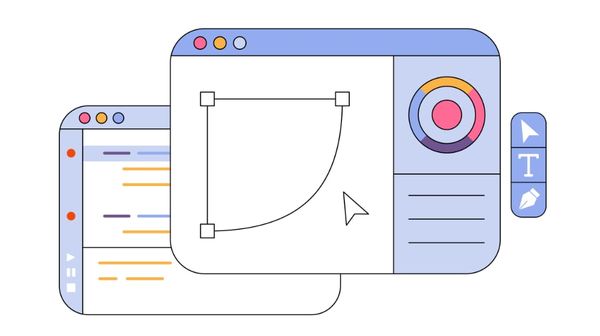
To get the most out of your brand asset management system, you need to implement the right brand management strategies.
Branding and brand management are dynamic processes. They require a balance of preserving your brand's traditional identity while leaving room for innovation and improvement. Let's get you started on your journey to brand excellence.
Create clear brand guidelines and you will enhance brand consistency. This is even more important when multiple team members are collaborating on your branding. Incorporate an outline of these brand guidelines into your BAM system, where all team members can easily access it for reference.
Metadata is the data about your data; the description of your digital brand assets that makes them easier to search for, identify, and share. When you introduce metadata conventions you'll speed up file searches and retrieval.
Be sure to use standardized naming conventions for your files, to avoid confusion during teamwork on branding projects.
It's crucial to control access to your brand assets. This process involves defining user roles, setting access levels for each role, and setting up user authentication. This will preserve the security of your files and protect them from unauthorized access.
Provide full training on your BAM system and tools. Don't assume that everyone knows how to use every tool. Your team may acquire a few new members along the way, so be sure to give all new staff working on branding access to a tutorial for using the new software.
Don't risk data loss. Back up your digital brand assets to the cloud in a safe and secure folder. Back up files after every rebranding project to protect both new and original versions. This will keep your branding efforts on track, even in the face of technical breakdowns or cyber-attacks.
Monitor your team's use of the BAM system and track their performance. There is always room to improve. Are there tools they aren't using? They may need a refresher course on how to use them. Perhaps they just need some new ideas on how to make the most of these tools.
When you build your brand with brand asset management tools, you preserve your brand identity and ensure consistency. You also streamline the collaborative process for your branding and marketing teams. But this calls for some specialized software, built to meet your branding challenges.
At Razuna, we offer BAM tools that are proven effective for digital brand asset management, backed by dependable customer support. This is why leading companies trust us for their digital asset management, brand asset management, digital marketing, and customer engagement.
If you're ready to do the same, register your free account and get started, today!

COLLECT+ is a productivity tool that helps you save and share everything you find on the web. It is built into the Razuna digital asset management platform.
Read now
These 18 tips for efficient photo organization are the best strategies for every marketer. Learn how to keep your digital images organized and accessible.
Read now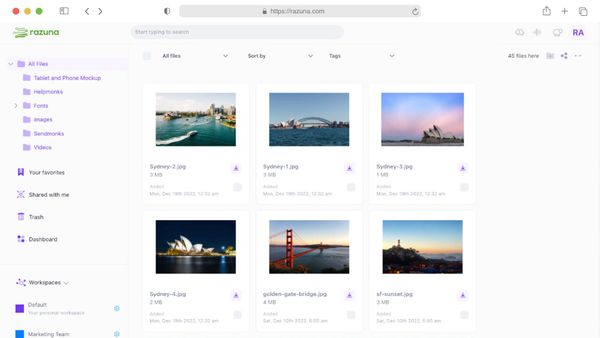
A digital asset library software organizes all digital assets in one place. But which one is the best? Here are the top 8 asset library software choices.
Read now
The latest update to our Digital Asset Management system, is focused on giving more power and flexibility to control user permissions, file, and folder access.
Read now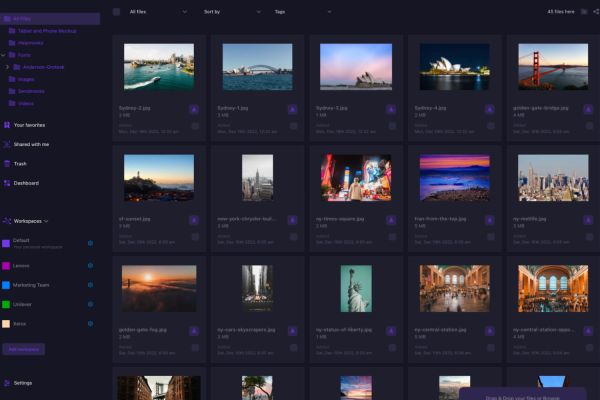
(each free accounts comes with 500 GB space)
